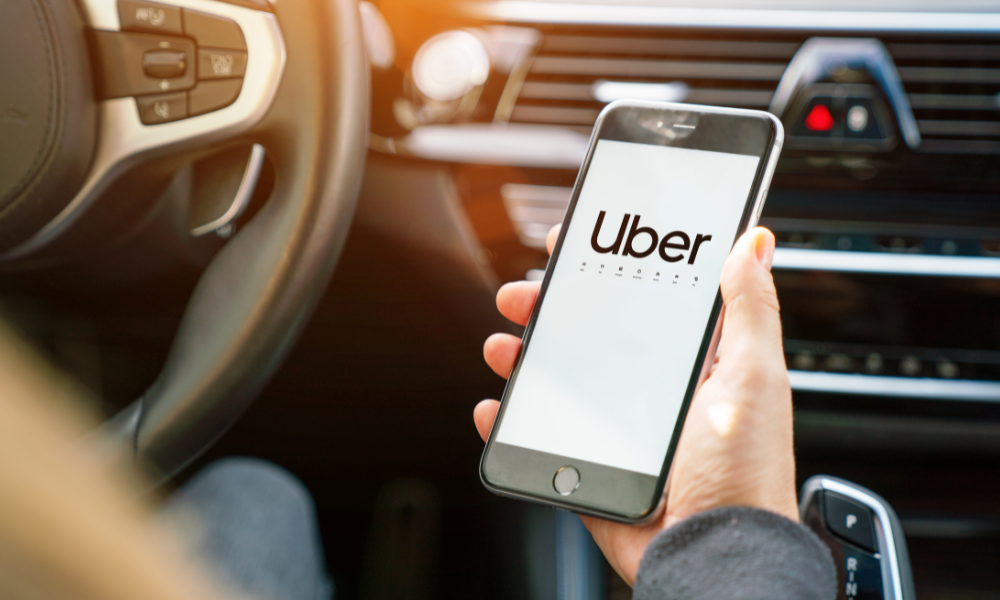The rideshare industry, which Uber is a part of, has been a convenient innovation when it comes to public transportation. However, despite all the comfort it provides, Uber – just like other industry players – is not immune to road accidents.
So, what does Canadian law say when a passenger such as yourself is caught up in an Uber accident?
In this article, we’ll discuss the basics of what to do (legally) after meeting an Uber accident. This article may also apply to accidents with other ride-hailing apps or ridesharing companies.
Lawyers can use this article as an educational piece for their clients, whether for proactive or post-accident purposes.
What are the rights of an injured person in case of an Uber accident?
Whether it’s an Uber ride or not, passengers of a vehicle in a car accident have several rights granted by law.
“Any injured person involved in a motor vehicle accident in Ontario has automatic entitlements to Accident Benefits,” says Sonia Leith, a Toronto-based personal injury lawyer. “If the individual is covered under another auto insurance policy, they would seek entitlement to these benefits through their own insurance as a first priority.”
However, Leith adds, that “if the individual is not eligible to claim under another policy, they would be entitled to claim Accident Benefits through Uber’s auto insurance.”
Leith, who is a partner at Neinstein Personal Injury Lawyers, provides a situation in the context of Ontario’s laws. “In Ontario, if an injured person suffers from a serious and permanent injury, they may also have a claim against the at-fault party, whether it is against Uber or another party.”
Notably, Uber has its own policy that can help its passengers involved in an accident.
“If a claim is made against the Uber driver, Uber’s Commercial Automobile policy would respond,” Leith says. “Uber has coverage with Economical Insurance with liability limits up to $2 million dollars while during a ride or limits of $1 million dollars for drivers operating Uber between rides.”
As for their drivers, Uber offers its own insurance policy, subject to additional fees:
Whether you’re an Uber driver or passenger in an accident, you can reach out to the best personal injury lawyers in Canada as ranked by Lexpert.
Automatic entitlements to accident benefits
Just like in Ontario, other provinces also allow passengers (and even non-passengers) who suffered injuries (whether slight or serious) to automatic vehicular accident benefits. These benefits follow a no-fault system; it doesn’t matter if it’s the Uber driver or the other one who is at fault.
Although it’s automatic and no-fault, it doesn’t mean that these benefits will just come. You must still:
-
inform your insurance company: your insurer must be notified about the accident within a particular number of days (e.g. within seven days from the accident); if unable to do so because you’re still hospitalized, have your family or insurance agent/broker do it for you
-
submit the necessary forms and attachments: this may include the names of drivers of the colliding vehicles, their insurance companies, and details of the accident (e.g. date, time, location)
Various benefits under an insurance policy
Under a private or statutory auto insurance policy, the following are the usual benefits for injured persons in case of a car accident, such as an Uber accident:
- income replacement
- non-earner benefits
- medical benefits
- rehabilitation costs
- attendant care
- funeral and death
However, the specific details and amount depend on the policy, insurance company, and the law that governs the statutory insurance benefits. The same benefits would apply both to a driver and a passenger.
Depending on the severity of the injuries, these benefits can either be for short-term or long-term disability benefits. Most benefits would start as short-term and would eventually extend to long-term for eligible persons.
Uber’s auto insurance policy
As an alternative to your own insurance policy or a statutory insurance, you may also apply for a claim before Uber’s auto commercial insurance policy.
The coverage of Uber’s insurance policy will depend on a lot of factors, one of which is the category the accident falls into:
-
when the driver’s Uber app is offline: the driver’s own personal auto insurance will cover any liability against its passengers, including car repairs and comprehensive and collision coverage
-
when the driver is online, but available for a trip: Uber’s third-party liability insurance will cover the cost of injuries or damage, for up to $50,000 per person, $100,000 for injuries, and $25,000 in property damage
-
when the driver is en route or on a trip: Uber’s most comprehensive insurance for ridesharing and deliveries will apply; this covers at least $1 million for damage to property and injuries to passengers, including for third parties involved in the accident
This only applies to rideshare and delivery drivers of Uber; it does not apply to commercially insured delivery drivers. In Canada, the specifics of the commercial insurance coverage will also differ in every province.
Claims for serious and permanent injuries
A civil tort action is another option for injured passengers in an Uber accident. The goal is to obtain compensation from the party liable or their insurer for the injuries they’ve caused.
This can be filed against either of the following alleged at-fault party:
- the Uber driver
- a third-party driver
- the municipality
As the plaintiff, you must establish the elements of a personal injury to prove that the defendant’s negligence is the cause of your injuries.
What are the steps to take after an Uber accident?
Leith says that if anyone is injured in an Uber accident, they should:
- seek medical attention immediately
- report the accident to their own insurance
To add, you must also document the accident and gather evidence of what exactly happened. Getting your own lawyer, a personal injury lawyer to be exact, is also strongly recommended.
“As a personal injury lawyer, I would assist in completing their application,” Leith says. “If they are not covered by any other automobile insurance policy, a claim can be made for Accident Benefits through Uber’s insurance policy.”
Here’s another summary of what you should do after an Uber accident:
Contact Lexpert-ranked best personal injury law firms in Canada for any problems with your insurance and claims after an Uber accident.
In any case, we’ll explain below the steps that you should take when you’re injured because of an Uber accident:
1. Document and gather evidence
After getting yourself to safety, i.e. moving yourself and the vehicle away from moving traffic, the next thing to do after a car accident is to document what happened. Of course, contacting the police and paramedics is also an immediate to-do.
Documenting can be by taking photos and videos of:
- the scene of the accident
- the vehicles involved
- the immediate surroundings
These will eventually be your pieces of evidence when you file your insurance claim or when you file a tort case in court.
Another important thing to do is to exchange contact and insurance information with:
- your Uber own driver
- the driver/s and passenger/s of the other vehicle/s
- any third-party witnesses of the accident
As for Uber drivers, they would have to report the accident through their app. This is part of filing a claim before Uber’s insurance policies. You, as a passenger, can also report the accident to Uber, still through the app or in their site.
2. Get medical attention immediately
Getting medical attention right away is not just for your own health, but also for legal purposes.
After an Uber accident, your medical records will be used as follows:
- be attached when you submit your claim with your insurer, or with the other party’s insurer, to support the amount you’re claiming for; and/or
- serve as essential pieces of evidence when you file a personal injury case, to justify the compensation for damages you’re asking from the court
These medical records, bills, and other documents must be preserved, as insurance claims or court cases may take a long time to be resolved. One good practice is to keep a personal copy and to give another to your own lawyer.
3. Report the accident to your own insurer
Whenever possible, and at the most reasonable and earliest time, you should report the Uber accident to your own insurer. This urgency applies if you’re filing against your driver’s insurer or the other party’s.
Filing it late will affect not only the credibility of your claim, but also the supporting documents you’ll have to secure for them.
What not to do after an Uber accident
In the same way, there are things that you shouldn’t do after an Uber accident or any other motor vehicle crash:
- admitting liability on behalf of your Uber driver
- apologizing for the accident, whether you’re at fault or not
- relaying the details of the accident with Uber’s or the other party’s insurer
- accepting a settlement offer without the help of your own lawyer
In sum, just don’t say things that can be taken against you or might weaken your future claim.
How can lawyers help their clients after an Uber accident?
A misconception about lawyers is that you only need them when things get messy. However, having counsel from the start is the better route to take. This also includes the moment when you file a claim with your insurance company.
Lawyers serve a higher purpose for clients involved in an accident. “As a personal injury lawyer, my priority is to help restore the life of my injured client,” Leith says. To do this, she helps her clients:
-
navigate the medical system by facilitating appropriate medical and rehabilitation treatment to ensure their recovery
-
while at the same time, accessing entitlement to insurance benefits and pursuing all available claims
File a personal injury case
Although your personal injury lawyer can help you with filing your claim with the proper insurance company, they can also help when you need to file a case in court.
They can help in evaluating the strength of your case, and other legal remedies you can take. Usually, a personal injury case is filed when you’re unjustly denied by an insurer or when the accident involves a fatality.
Limitation period in a personal injury case
The statutory limitation period is another reason why injured parties in an Uber accident need to immediately talk to a lawyer.
“If they have a serious and permanent injury, there is a limitation period of two years to issue a claim in court against the at-fault party,” Leith says.
This two-year period is provided by limitation statutes in every province and territory. This timeframe applies to most civil cases, including claims for personal injuries.
Since building up a case takes time, it’s prudent to talk to a lawyer right away. It does not just concern this limitation period, but also the preparation of evidence and court submissions.
To do’s after an Uber accident: your railroad to recovery
“It has been over a decade since Uber came to cities across Ontario in 2012,” Leith says. “As of December 2024, there were over 80,000 licenses issued in Toronto alone for ride share programs.
“Given the pervasive use of Uber, it is inevitable that Uber vehicles have been involved in motor vehicle accidents. This may affect not only the Uber drivers, but also Uber passengers as well as third parties involved in a collision.”
As such, both Uber drivers and passengers must know what to do in case of a vehicular accident. Given that this unfortunate event would involve many parties — the driver, the passengers, Uber itself, and insurance companies — having the help of a lawyer is a must.
“It is encouraged to speak to a personal injury lawyer as soon as possible when an injury is sustained in an accident,” Leith says.
To get a glimpse of what a personal injury lawyer does, watch this earlier episode of Lexpert TV, where Neinstein Personal Injury Lawyers share their insights about their career.





